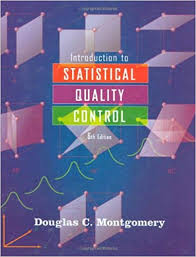Course Description:
Using appropriate analytical frameworks, this course
reviews major trends in economic indicators and policy debates in India in the
post-Independence period, with particular emphasis on paradigm shifts and
turning points. Given the rapid changes taking place in India, the reading list
will have to be updated annually.
|
Course objectives: |
|||
|
CO1 |
To get an overview of Indian Economy. |
||
|
CO2 |
To make the students acquainted with the latest developments in the Economy. |
||
|
CO3 |
Students will come across with the problems and success of LPG Policy |
||
|
CO4 |
Know the positive and negative impacts of LPG. |
||
|
CO5 |
Students will know and understand nations problems |
||
|
CO6 |
Learn the measures to solve the problems of the nation. |
||
Course Outcomes:
After completion of this unit, students will be able to:
Understand and explain an overview of Indian economy. Understand and explain the latest developments take place in our economy.
After completion of this unit, students will be able to:
Understand and explain the concepts of LPG with examples. Understand and Explain tie problems and measures of Poverty and Unemployment.

- Teacher: VINOD PATTATHIL
Course Objective
1. Understand vector spaces and subspaces and apply their properties.
2. Construct a mathematical expression that involving characteristics of matrices, such as its four fundamental subspaces, rank, determinant, eigenvalues and eigenvectors, diagonalization.
Course Outcomes CO1. Demonstrate understanding of the concepts of
vector space and subspace. CO2. Demonstrate understanding of linear
independence, span, and basis. CO3. Determine rank by reducing the matrix to Echelon
and Normal forms. CO4. Determine eigenvalues and eigenvectors and solve
eigenvalue problems. CO5. Determine a modal matrix, and reducing a matrix
to diagonal form. CO6. Compute inner products on a real vector space
and orthogonality in inner product spaces.

- Teacher: NAGENDRA KUMAR GOLLAPUDI
OBJECTIVE OF THE COURSE:
· Learning fundamentals of object-oriented programming.
· Able to work with Java IDE’s & acquire Compiling and interpretation Skills involved in JAVA execution.
· Able to code for topics like Constructors, Method Overloading/overriding, Inheritance, Abstract classes
· Understand the importance of Packages, Exceptions & Multi-threading, Files
· Proficiency to work with Advanced Java concepts like Applets, AWT, Swing and its components
· Aware of JDBC environment for Database connectivity and interactions
COURSE OUTCOMES:
By the end of the course, the student will be able to :
CO 1: Profound Knowledge on Core Java Programming and its applications
CO 2: Ability to describe and implement the object oriented principles
CO 3: Competency for implementing core Java applications given
CO 4: Potential to understand and execute Advanced Java concepts
CO 5: Able to explain JDBC connectivity
CO 6: Confidence to exhibit the acquired concepts in terms of seminar, GD and programming challenges

- Teacher: VIDYA SAGAR JODU
- Teacher: Dr. SRINATH NAGANATHAN
This
course is designed to provide theoretical and practical knowledge to the
students about the concepts, techniques and models in Software Engineering.
- Teacher: APARNA VIJAYAN
Course Objective:
Students learn to describe some of the surfaces by using analytical geometry
Course Outcomes:
CO1: Equation, centre and radius of Sphere
CO2: Understand the concept of Sphere and circle
CO3: Find family of spheres Passing through a circle , tangent planes and normal lines to a sphere
CO4: Understand the concept of Radical plane
CO5: Representing a cone , cone and a plane
CO6: Concept of the Right Circular Cone, the Cylinder, the Right Circular Cylinder
CO7: The General Equation of a conicoid, Intersection of Line with a Conicoid
CO8: Concepts of Plane of contact, Enveloping Cone and Cylinder

- Teacher: DAYANANDA BABU V
Understand how a control chart is used to detect assignable causes
Construct and interpret control charts for variables
Construct and interpret control charts for attributes
Construct single and double sampling plans
Understand the role of probability in systems reliability
Learning Outcomes:
At the end of the course, the student should be able to:
CO 1: Understand the concepts of quality control.
CO 2: Understand the concepts of process control and product control.
CO 3: Demonstrate the ability to design, use, and interpret control charts for variables.
CO 4: Demonstrate the ability to design, use, and interpret control charts for attributes.
CO 5: Explain the process of acceptance sampling and describe the use of operating characteristic (OC) curves
CO 6: Construct reliability of a system in parallel, series connections

- Teacher: JAIMOLE CROSS
The objective of this course is to provide an
understanding for the graduate student on statistical concepts to include
Sampling theory, Time series analysis, Index numbers and demand analysis.
Course Outcomes:
After completing this course the student will learn to perform the following:
CO-1 Explain the concepts of population, sample, parameter, statistic, estimator and estimate. Distinguish between a census and a sample survey.
CO-2 Distinguish between sampling error and non-sampling, explain the advantages of a sample survey; Describe various methods of sampling.
CO-3 Define the concept of time series, appreciate the role of time series in short term forecasting, explain the components of time series.
CO-4 Estimate the trend values by different methods.
CO-5 Additive, Multiplicative and Mixed models of Time series.
CO-6 Describe the concept of Demand analysis and different models
CO-7 Explain the meaning and appreciate the uses of index numbers, identify and avoid various issues faced while developing index numbers for some special purposes.
CO-8 Apply and calculate index numbers using different methods, describe the limitations of index numbers to avoid errors in interpretation
- Teacher: Dr. SRIDHAR BABU MOTHUKURI